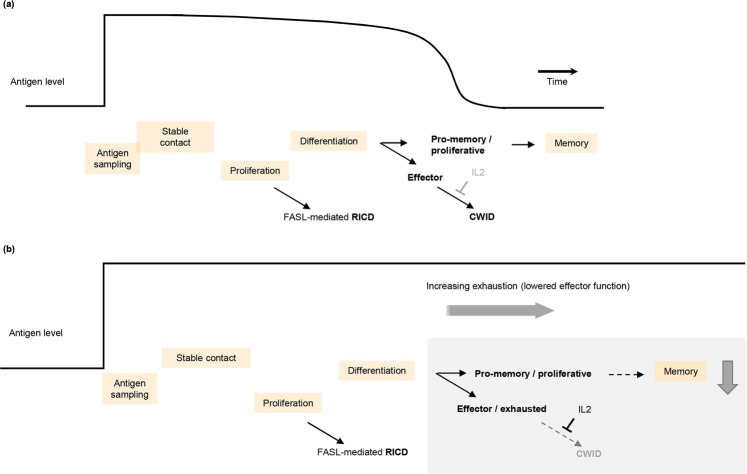Figure 1.
Multiple cellular state transitions underlie CD8+ T cell responses to acute and chronic co-stimulation. (a) Literature-based model of the acute response. CD8+ T cell activation starts with a complex and highly regulated process of antigen sampling (brief cell-cell contacts) that minimizes the risk of a response to self-antigens while sensitively detecting matching non-self antigens. Identification of a target cell results in the formation of a stable immune synapse and the activation of the T cell receptor (TCR) and its associated co-receptors (known as signals 2 and 3). TCR co-stimulation in turn leads to rapid and robust T cell proliferation. The magnitude of T cell amplification is controlled via a FAS/FASL mediated apoptotic signaling process known as restimulation-induced cell death (RICD). Activated CD8+ T cells differentiate into memory precursor and short-lived effector cells. Effector cells require cytokines such as IL2 for survival, and undergo cell death when antigen clearance leads to loss of cytokine signaling, a process known as cytokine withdrawal-induced cell death (CWID). After antigen clearance, memory CD8+ T cells are formed from the pro-memory/proliferative (PP) population in a process that takes several weeks. (b) In response to chronic co-stimulation, CD8+ T cells undergo state changes similar to (a). Prolonged activation reduces the proportion of memory-precursor cells, while persistence of cytokine signaling antagonizes CWID and leads to a hypo-functional effector/exhausted state.

